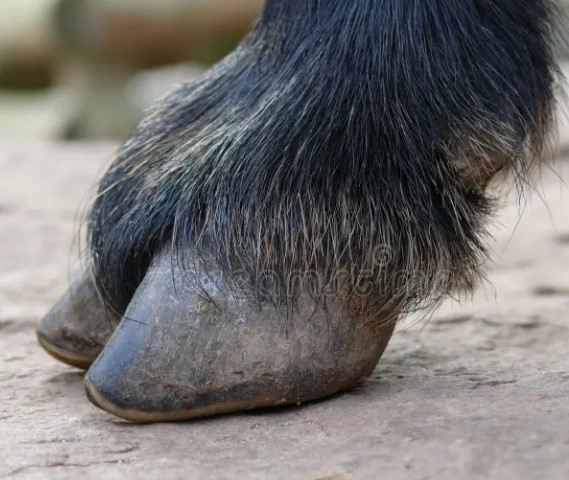Camelina is an important crop in the oilseed market

Camelina oilseed is rapidly gaining popularity in the Russian and world markets. This unpretentious crop has impressive resistance to adverse weather conditions - both frost and drought. Particularly attractive to farmers is the fact that camelina, unlike sunflower, carefully consumes nutrients from the soil, without depleting its resources.
Thanks to its natural protection against pests and diseases, the crop does not require chemical treatment, which significantly reduces the costs of its cultivation. Saffron MILK cap fits perfectly into existing crop rotation schemes and demonstrates high yields. From a little-known niche crop, it has turned into a significant player in the oilseed market, and now its further distribution is determined solely by sales opportunities.
— Camelina sativa Czantz., known as spring camelina, belongs to the Cabbage family and is characterized by the presence of a taproot. This annual grass has become more widespread than its winter variety. An important advantage of the crop is its resistance to shedding after ripening, which distinguishes it from rape. German farmers practice joint sowing of camelina with legumes, since their ripening periods coincide. This method allows not only to collect both crops at the same time, but also to effectively combat weeds, since camelina, due to its rapid germination, suppresses their growth, — say specialists from the Altai branch of the Federal State Budgetary Institution "TsOK APK".
This plant is capable of self-pollination in the northern regions, while in the south cross-pollination occurs more often. The stems are thin and branched, forming a well-developed structure reaching a height of half a meter to 80 centimeters. On short petioles are stiff-haired lanceolate leaves, their edges are either smooth or have small teeth. Germination of seeds is possible already at minimum temperatures of 1-2 degrees Celsius. Small pale yellow flowers are collected in a racemose inflorescence. The fruits are small pear-shaped pods (6-9 mm), which open when ripe, releasing 6-8 seeds. Red-brown seeds have an oblong-oval shape, 1.5-2 mm in size, and a thousand of these seeds weigh only 1-1.5 grams.
In recent years, the crop has been actively spreading across the regions of RUSSIA. From the Volga region to Western Siberia, farmers are showing interest in this unpretentious crop. It is especially actively cultivated in Tatarstan, Bashkortostan, as well as the Saratov, Orenburg and Rostov regions. Recently, camelina has begun to be grown in the Omsk region and in Altai. Although many regions are interested in producing this crop, development is constrained by limited sales opportunities.
— The plant demonstrates impressive resistance to adverse conditions. Spring camelina successfully grows on slightly saline sandy loam soils and copes well with drought. Its shoots are amazingly frost-resistant — they can withstand temperatures down to -12°C. The vegetation cycle lasts from 66 to 90 days, and in the northern regions this period becomes shorter, — the Altai branch of the Federal State Budgetary Institution “TsOK AIC” notes.
The aviation industry is actively introducing environmentally friendly fuel from camelina oil, and Lufthansa has become a pioneer in this area, consuming 7.3 million tons of such biodiesel annually since 2011. Experts predict a significant increase in demand for biofuel in civil aviation - by 2050, the need may reach 36.8-57.5 million tons. Camelina oil is especially attractive as a raw material for biofuel due to its compliance with EU environmental standards and the requirements of the Kyoto Protocol to reduce greenhouse gas emissions. On the European market, this vegetable oil is mainly processed into environmentally friendly aviation fuel, which attracts large industrial consumers.
There are only three plants in the world suitable for the production of second-generation biofuel — synthetic biokerosene. Among them, camelina occupies a leading position in the European region. Alternatives are jatropha, which grows in Africa, India and Southeast Asia, as well as algae , which are mined in the American and Australian regions. However, large-scale production of biokerosene requires colossal resources — to produce one million tons of fuel, it is necessary to process twice as much camelina oil, which in turn requires 4.5 million tons of raw materials. Such a volume can only be obtained by cultivating 4-5 million hectares of land for camelina. It is the difficulties with regular deliveries of the required amount of raw materials that are the reason why not a single large air carrier has switched to the permanent use of this type of fuel.
Camelina oil is widely used in world practice: it is used as a component of dietary nutrition, raw material for the production of drying oil, as well as in the medical and perfume industries. An alternative source for obtaining kerosene can be oils from palms and rapeseed, but their processing requires significantly higher financial costs.
The Russian market for camelina is facing a contradictory situation: domestic demand for the crop is not yet developed, and production volumes are insufficient for serious EXPORT. Entering European markets is further complicated by the need to obtain certification, a procedure that requires significant time and money investments.
Camelina responds well to fertilization, although it is generally undemanding to growing conditions. In the Middle Volga region, it is recommended to apply mineral fertilizers in the proportion of N30 P60 before sowing. The amount of fertilizer is calculated taking into account the planned yield and the presence of nutrients in the soil.
This crop is highly profitable, since all parts of the plant can be used. Camelina produces not only oil, but also valuable by-products - seeds, meal and cake, which are actively used in the production of feed for agricultural poultry as a source of protein.
Spring application of ammonium nitrate N30 has a positive effect on the development of winter camelina, similar to other winter cereals. This method of fertilization can increase crop productivity by a tenth, while simultaneously improving the oil content and volume of seeds obtained.
The expansion of cultivated areas of camelina entails an increase in the risk of damage by various diseases and pests. Among the main threats are insect pests - seed worm and rape leaf beetle, as well as fungal diseases, including downy mildew and powdery mildew. In the future, an increase in the need for plant protection products against these threats is expected.
Source: Altai branch of the Federal State Budgetary Institution "TsOK APK"
Read together with it:
- С января по июль экспорт свинины из ЕС вырос на 1,6%На втором месте оказались Нидерланды с объёмом экспорта в 392 000 тонн. Дания экспортировала свинину в третьи страны с объёмом в 308 000 тонн, что примерно на 13% меньше, чем в предыдущем году. Германия экспортировала 180 000 тонн, что на 18% меньше, чем годом ранее. Это было обусловлено, главным образом, дополнительными ограничениями на экспорт, вызванными вспышкой ящура в начале года. Помимо зап...
- Zakharova promised "tough steps" in response to the 19th EU sanctions package.Maria Zakharova RUSSIA will respond harshly to the latest round of EU sanctions, Russian Foreign Ministry spokesperson Maria Zakharova stated on TELEGRAM . The EU previously adopted the 19th package of anti-Russian sanctions, which included a ban on the import of Russian LNG, new restrictions on oil companies, ships, banks, and the EXPORT of certain goods, as well as restrictions on the movement o...
- Московская область демонстрирует рост урожая зерновых, картофеля и овощей в 2025 годуВ Московской области отмечается положительная динамика по валовому сбору ключевых сельскохозяйственных культур. Значительно увеличены показатели по зерновым и зернобобовым, картофелю и овощам. В Министерстве сельского хозяйства и продовольствия Московской области сообщают, что валовой сбор зерновых и зернобобовых культур составил 592,2 тыс. тонн, что на 89,9 тыс. тонн или 18% превышает показатель ...
- Callas spoke about the EU's joy over new US sanctions against Russia.The European Union welcomes the US "signals" regarding RUSSIA, Kallas said. She called Washington's new sanctions against Rosneft and LUKOIL a "signal of strength" and agreement between Europe and the US. Moscow considers the sanctions illegal.The European Union approves the US imposition of new sanctions against Russia, European Union Foreign Minister Kaja Kallas told reporters. Kallas published ...
- Беларусь и Алтайский край намерены увеличить биржевую торговлю сельхозпродукцией23 октября, Минск. Поставки белорусской мясомолочной продукции в Алтайский край и закупки зерна и семян для аграрного сектора Беларуси определены в качестве магистральных направлений сотрудничества в сфере электронной биржевой торговли. Такая договоренность достигнута по результатам встречи представителей Белорусской универсальной товарной биржи с делегацией деловых кругов Алтайского края, которая...
- The EU imposed sanctions against Medvedev's aide and the HSE rector.The sanctions include AvtoVAZ CEO Maxim Sokolov, Medvedev aide Oleg Osipov, HSE Rector Nikita Anisimov, three children's ombudsmen, a North Korean general, and others. In total, the EU has added 21 individuals to the sanctions list .As part of its latest sanctions package, the European Union imposed restrictive measures against individuals, including AvtoVAZ CEO Maxim Sokolov, Assistant to Deputy ...
- Politico learned of a split in the EU over a new €140 billion loan to Ukraine.European countries have still not agreed on the terms of a €140 billion loan to Kyiv to cover the Ukrainian budget deficit and purchase weapons, Politico reports. As the publication notes, France , Italy , and Germany insist that Kyiv use the loan to purchase weapons from European, not American, contractors. The idea was first put forward by German Chancellor Friedrich Merz in an article for the F...
- The Russian Union of Travel Industry (RUTI) clarified that EU sanctions will not affect Russian tourism.New EU sanctions prohibit European travel companies from organizing trips to RUSSIA for their citizens. This will not affect the operations of Russian tour operators, Georgy Mokhov, Vice President of the Russian Union of Travel Industry, told RBC, commenting on the 19th package of EU sanctions against Moscow. "This measure does not affect the activities of Russian tour operators within the country...





























































